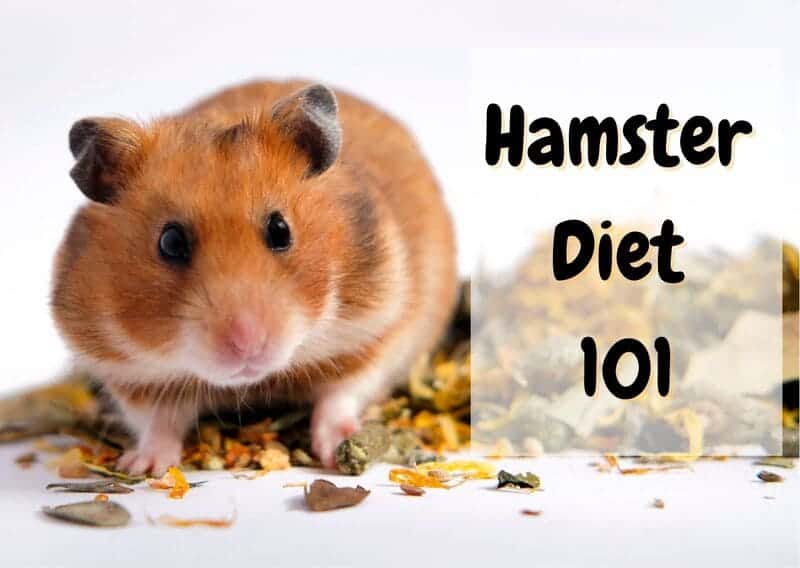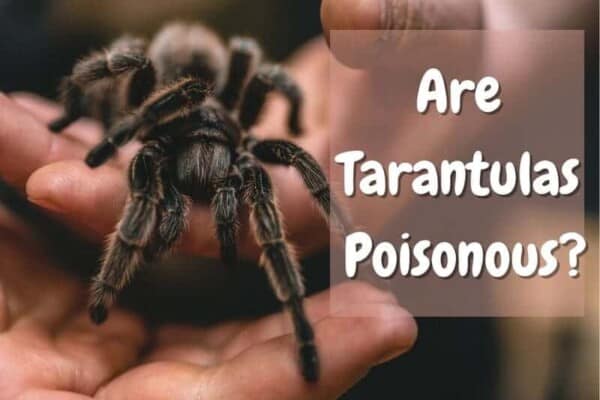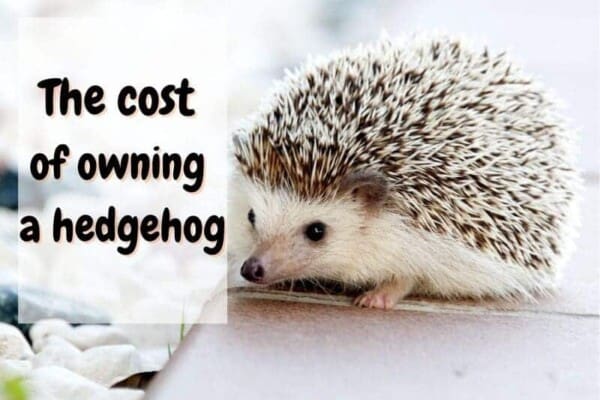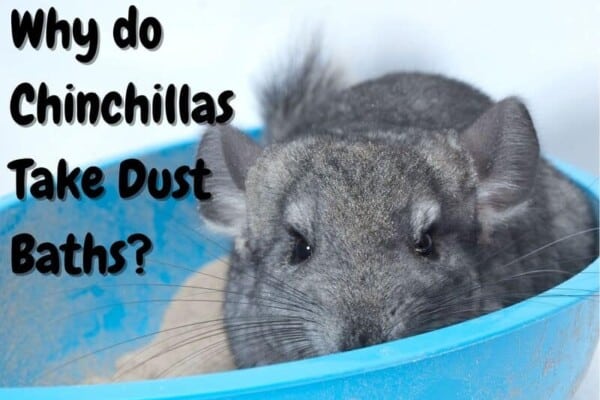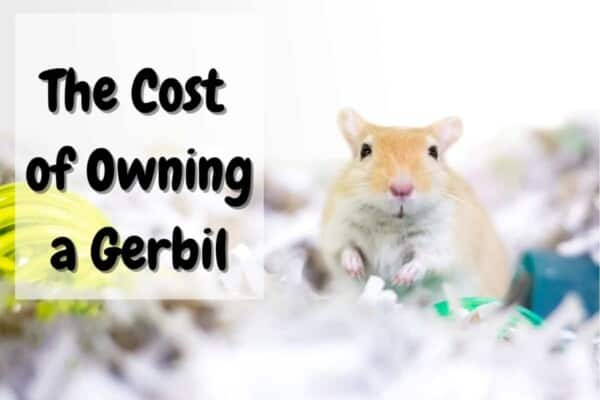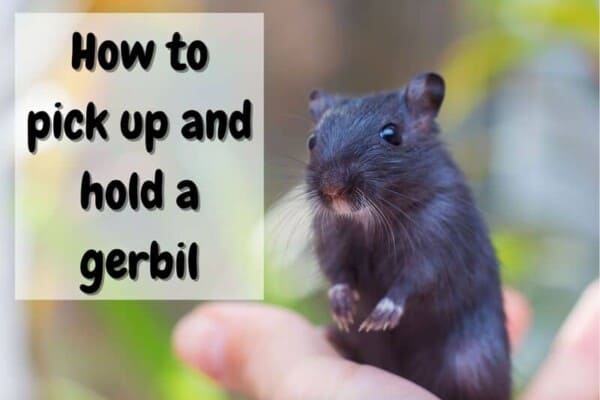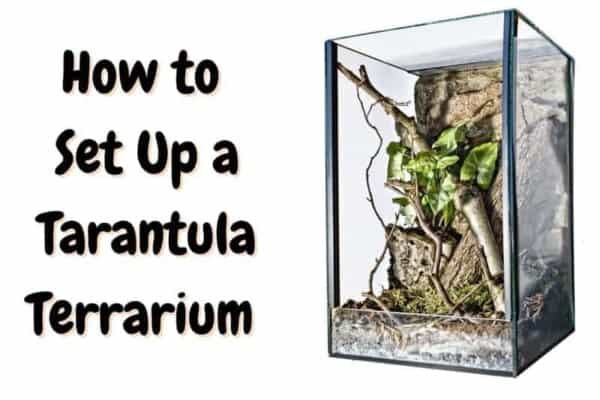Hamsters are opportunistic omnivores that will eat nearly anything that is fed to them. Some breeds are more sensitive to certain foods than others. But nearly all hamsters can survive from a healthy mix of fruits, vegetables, grains, and seeds.
If you own a hamster or two, here is the complete list of foods that are good for them to eat.
Hamster Diet: A List of Food Your Hamster Can Eat
1. Vegetables
Most hamsters will love to eat fresh veggies that make up a portion of their daily diet. You’ll need to regulate how much you give to them per day since they hoard food rather than eat it immediately. Keep in mind that certain fruits and vegetables need to have their skin removed beforehand. The complete list includes:
- carrot,
- broccoli,
- Bok Choy,
- cabbage (limited amounts),
- cauliflower,
- chicory,
- celery,
- spinach,
- sweet peppers,
- cucumber,
- cress,
- zucchini,
- cucumber,
- kale,
- peas,
- cooked potato,
- romaine lettuce,
- sweet potato (without the skin),
- squash,
- yam
- asparagus,
- corn on the cob/sweet corn/raw corn kernels (and canned),
- green beans,
- kidney beans (cooked),
- okra,
- turnip,
- water chestnuts,
- soybean sprouts,
- mung beans,
- Pak Choy,
- Swiss chard,
- arugula,
- beets and beet tops,
- romaine,
- artichoke,
- bib,
- butternut,
- red lettuce.
2. Fruits
- apple (without the skin),
- pear,
- peach,
- melon,
- banana,
- blueberries,
- grapes,
- strawberries,
- raspberry,
- cherry,
- mango,
- plums (pit removed),
- Loganberry,
- lychee,
- star fruit,
- kiwi fruit,
- figs,
- dates (without the pit).
3. Herbs and flowers
- basil,
- sage,
- parsley,
- coriander,
- cilantro,
- dandelions and greens,
- alfalfa,
- endive,
- mint,
- sage,
- alyssum,
- asters,
- bramble leaves,
- blackberry leaves,
- burnet,
- chickweed,
- clover,
- coltsfoot,
- cornflowers,
- cow parsley,
- crosswort,
- dock,
- groundsel,
- hawthorn leaves
- hedge parsley,
- knotgrass,
- mallow,
- marigolds,
- Michaelmas daisies,
- nasturtiums,
- nipplewort,
- phlox,
- plantain,
- roses,
- salvias,
- Shepherds purse,
- sow thistle,
- sweetpeas,
- trefoil,
- vetch,
- wallflowers,
- watercress,
- sun grass.
4. Cereals and nuts
Hamsters can be fed a wide array of cereals and nuts readily available around the world. These will include:
- whole grain,
- whole wheat,
- bread,
- toast,
- whole-wheat pasta,
- brown rice (cooked),
- whole-grain cereal,
- sunflower seeds,
- pumpkin seeds,
- nuts,
- lentils,
- popcorn,
- chestnuts (without the shell),
- crushed oats,
- barley,
- Cheerios,
- pistachios,
- cashews.
5. Pellets
Pellet and mixes will vary between hamster breeds. You have different nutritional needs for Syrian and Dwarf hamsters. Based on your breed, a good rule of thumb for a balanced hamster diet goes like this :
- Syrian hamster pellets: More grains and cereals with fewer seeds
- Dwarf hamster pellets: More variety of seeds with fewer grains and cereals.
Certain mixes have a variety of seeds and goodies that may be too fattening for your hamster. A good hamster care rule is to stick to brands that offer very low levels of preservatives and natural sugars. On the same note, try to avoid mixes that have peanuts.
6. Meat and insects
Being omnivorous, hamsters can also eat proteins in the form of meat and insects in small quantities. These may include:
- mealworms,
- crickets,
- hard-boiled eggs,
- cooked chicken (small pieces)
- cooked beef,
- canned dog food,
- small amounts of cheese (once a week),
- bone marrow,
- waxworms,
- Dubai roaches.
7. Grass
Your hamster is not going to be overly interested in hay and dry grass. They will most likely nibble on it from time to time but won’t treat hay as a primary source of food. A hamster is keen to use this hay as bedding material instead.
They do prefer Timothy hay for the smell and taste over Orchard hay. These would be the best two choices that can be given sparsely to a hamster, a few bits at a time. Other than that, a hamster likes to eat seeds and other snacks.
8. Chewing snacks
A hamster will like to chew cardboard, coconut shells, hay cubes, unbleached Loofah, pumice stone, and Seagrass.
9. Wood snacks
Safe wood they can chew will include applewood, dogwood, Elm and red elm, grapevine, Hawthorne, hazelnut wood, pearwood, poplar, quince, willow, and yucca.
What can I give a baby hamster for food?
Some baby hamsters will start to eat solid food being only 10 days old. The hamsters you buy at the pet store are typically 4-8 weeks and are already trained to eat pellets, vegetables, and fruits. You will follow the diet that is best suited for them based on their breed.
These young hamsters will need less food as a result of their size, so no more than one tablespoon of pellets and additional vegetables and fruits. They will also like seeds and grains mixed into these serving sizes.
How much food should I give my hamster?
You can give 10 grams of dry food and pellets twice a day to adult hamsters. You can also give them little snacks including fruits and veggies in addition to their pellets. In general, they can eat up to 1-2 tablespoons of pellet food per day.
The ratio of veggies and fruits can be matched with one or two slices or a mixed menu worth a tablespoon each. If you can balance these portions to be equal (5 grams apiece) then this works as well.
How often should I feed my hamster?
There are two times that you may feed your hamster. The first is when you wake up in the morning. The next time will be in the late afternoon or evening. The late afternoon will be more energetic for hamsters since they are nocturnal critters mostly awake during the night.
Anything you put in their cage in the morning will likely be hidden already. Once they know there is food in their cage, they wake up and quickly hide it for later.
When should I feed my hamster?
The most important meal of the day will be at dusk when they are starting to wake up. They are not strictly nocturnal, so waking up earlier will be normal for them. Once they wake up, they will be hungry, so structure your feeding time when they wake up in the late afternoon.
They will take this food and stash it somewhere in their cage for eating it when they wake up again. Make a point to give the exact serving size at least twice a day.
Hamsters diet Do’s and Don’ts
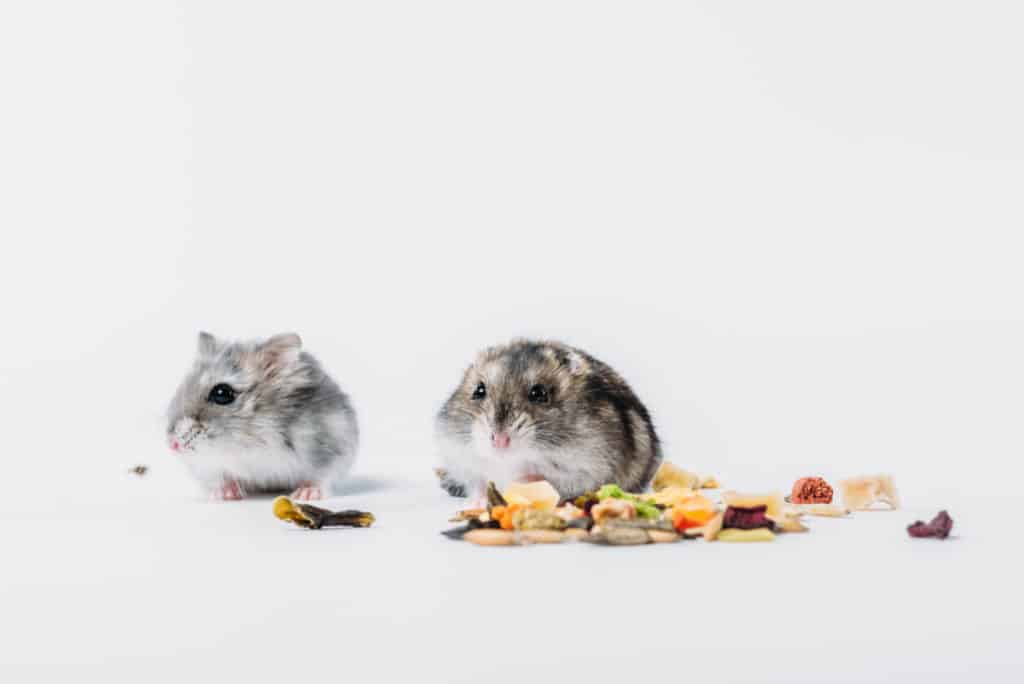
Some vegetables and fruits are not good for a hamster to eat since they can upset its stomach. Because of the acids or the volatile nature of these items, it can cause them to have reactions including diarrhea.
Don’t feed your hamster these foods
- oranges,
- lemons,
- grapefruit,
- tomatoes,
- green tomatoes,
- almonds,
- apple seeds,
- grape seeds,
- eggplant,
- raw beans,
- raw potatoes,
- mushrooms,
- pickles,
- raisins,
- citrus fruits,
- garlic,
- onions,
- Rhubarb leaves or raw Rhubarb,
- Pork,
- chocolate,
- peanuts and peanut butter,
- sugary foods,
- salty foods,
- junk food.
These plants and flowers are toxic to your hamster
Many species of plants and flowers can be toxic and dangerous to eat. If they are consumed by your hamster, they will act just like poison and might kill them. Never give your hamster any of these selected plants of flowers:
- bindweed,
- bluebells.
- bulbs,
- buttercups,
- clematis,
- crocus,
- deadly nightshade,
- elder,
- evergreen plants,
- hemlock,
- henbane,
- horse chestnut,
- laurel leaves,
- oak leaves,
- privet,
- ragwort,
- scarlet pimpernel,
- speedwell,
- toadflax.
Only give your hamster fresh veggies and fruits
No matter what breed you decide to get, all hamsters will love fresh fruits and vegetables. It’s fine to give them leftover scraps from a salad (minus the tomatoes) in moderation. If something is not fresh and it’s gotten old or rubbery, don’t try feeding these to hammies.
1. Obesity
All hamster breeds are notorious food hoarders and will fill their cheeks with all the food to hide it in their cage. Don’t be surprised if they come back begging for more, that’s just their nature. They will get plump before you know it by overfeeding them.
It’s also not good if they hide their food and it starts to spoil. Take the time to see where they hide their food and remove anything that can spoil quickly. Cooked meat and fruits will start to spoil and rot, and you don’t want them to eat these items if they have gone bad.
2. Toxic foods
When it comes to toxic foods, the natural sugars don’t agree with their digestive tract. Raw potatoes are toxic until they are cooked, which reduces the number of carbohydrates and starches within. The same applies to apple skins which need to be removed before giving them apple slices.
Hamster diet: some examples of healthy hamster treats
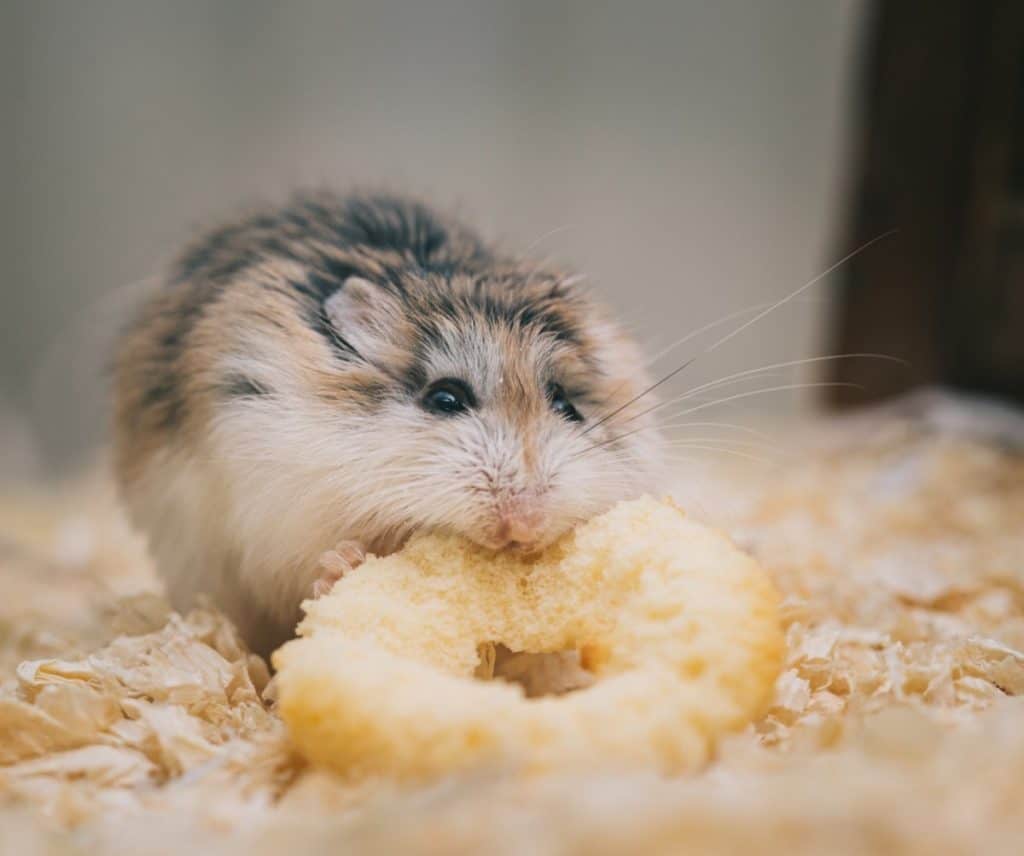
Hamsters like to have a variety to choose from so you can also make a mixed bowl of seeds, grains, and cereals. You can also choose to mix veggies and fruits together. These can be placed into their food dish at dusk.
Try to keep these mixtures bite-size so you have more variety in your combinations. Don’t go overboard with sugary fruits to keep a balance of crunch and soft textures. You can make paste-like mixtures by adding unflavored Greek yogurt and whole-wheat breadcrumbs.
Nutrition bomb
Take one slice of banana and mash it up and then take one teaspoon of mixed seeds and crush them in a little baggie using a tenderizing hammer. Sprinkle the seed crumbs into the mashed banana. Then spread this mixture onto a little slice of wheat bread and give it to your hamster.
Veggie burrito treat
Take some leafy greens like lettuce and chop them up into little slices. Use two small leaves about the size of a slice of American cheese. Take a small slice of cheese of your choice and mash that into a paste and mix in crushed seeds, grains, or cereal.
Roll this into a dry paste tube over half of a thin pretzel stick (the unsalted kind). Then roll this over the lettuce greens as an outer coating and serve to your hamster.
How often should I give my hamster a treat?
We don’t recommend giving your hamster treats every day but at least once a week. Since special treats may be higher in natural sugar, this will be balanced with their normal pellet and roughage diet.
One blueberry per day is fine as long as you give a slice of carrot and also some nuts or seeds additionally. See what they like and create new combinations using the recommended list from this guide.
What and how do hamsters drink?
Hamsters drink water exclusively and will need water to be given to them daily. Leaving water in a bowl for them to drink is not a good idea as they will likely crawl over the bowl, making them and their cage wet. It’s better to use a water bottle instead.
Water dispenser
A grown hamster can consume up to 10-30 milliliters of water per day. This is 4 teaspoons of water every day. But this can vary based on the weight of your hamster. A hamster that weighs 100 grams will need 10 milliliters or two teaspoons of water.
You will need to change the water bottle every day with fresh water from the tap using bottled water. Always keep the drinking bottle clean and free from the junk build-up around the drinking tap.
What do Hamsters eat in the wild?
When these little critters were discovered in the wild, they were observed to eat all sorts of things. This included insects, plants, small frogs and lizards, vegetables, and fruits. They will eat nearly anything that they can catch and eat. Because they are omnivores, they eat whatever their local surroundings have to offer.
How long can a hamster go without eating?
The good news is, your hamster won’t go hungry if he does not eat for a whole day. Actually, the length of time is one or two days, and won’t suffer any long-term damage. So if you leave for the weekend and feed them just before you leave, they won’t be in danger. However, after 3 days, you can expect to see serious signs of a sick hamster.
References and further reading:
- Nutrition of the Golden Hamster, Jack M. Cooperman, Harry A. Waisman, C. A. Elvehjem
- The Food Preference of Striped hamster and their consumptions, HOU Xixian, et al. Institute of Grassland, Chese Academy of Agricultural Sceihees, Huhehot 01001O, Inner Mongolia, P. R. C.
Contents
- Hamster Diet: A List of Food Your Hamster Can Eat
- What can I give a baby hamster for food?
- How much food should I give my hamster?
- How often should I feed my hamster?
- When should I feed my hamster?
- Hamsters diet Do’s and Don’ts
- A few typical diet-related issues in hamsters
- Hamster diet: some examples of healthy hamster treats
- What and how do hamsters drink?
- What do Hamsters eat in the wild?
- How long can a hamster go without eating?

